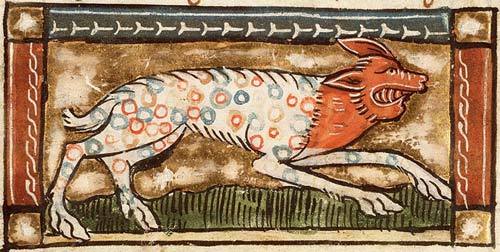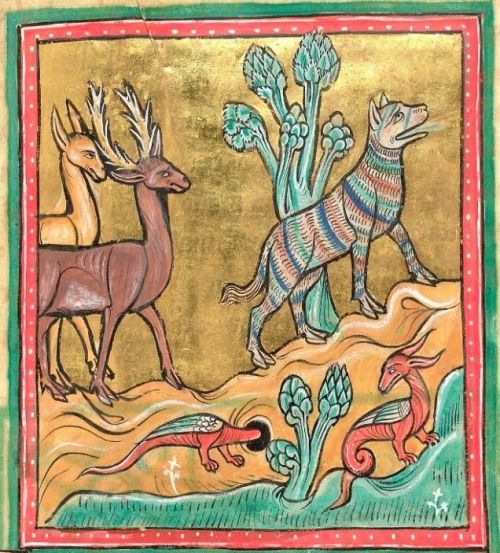historyisntboring: Panthers and leopards in medieval bestiariesThe main point of medieval bestiaries
historyisntboring: Panthers and leopards in medieval bestiariesThe main point of medieval bestiaries wasn’t realism, especially because most of the people illustrating them had never seen most of the exotic animals depicted on the pages - but each animal still needed to be instantly identifiable. Because of that, visual codes were developped for each animal.In most bestiaries, panthers and leopards have many colors (usually seven, frequently considered a perfect number at the time in Europe), sometimes in dots, sometimes in patches or in stripes. Usually, the breath of the animal is also coloured, because it is supposed to attract all animals (except its enemy the dragon, because the panther was seen as a Christ-like figure at the time), as seen on image 2 and 3.Sources:Bestiaires du Moyen Âge (Michel Pastoureau) Image 1: Richard de Fournival’s Bestiaire d’amour: France (Paris), 13th-14th century. Bibliothèque Nationale de France Image 2: British Library, Harley MS 3244, Folio 37r. Panther Image 3: Rochester Bestiary, c. 1225-1250 -- source link
Tumblr Blog : historyisntboring.tumblr.com


